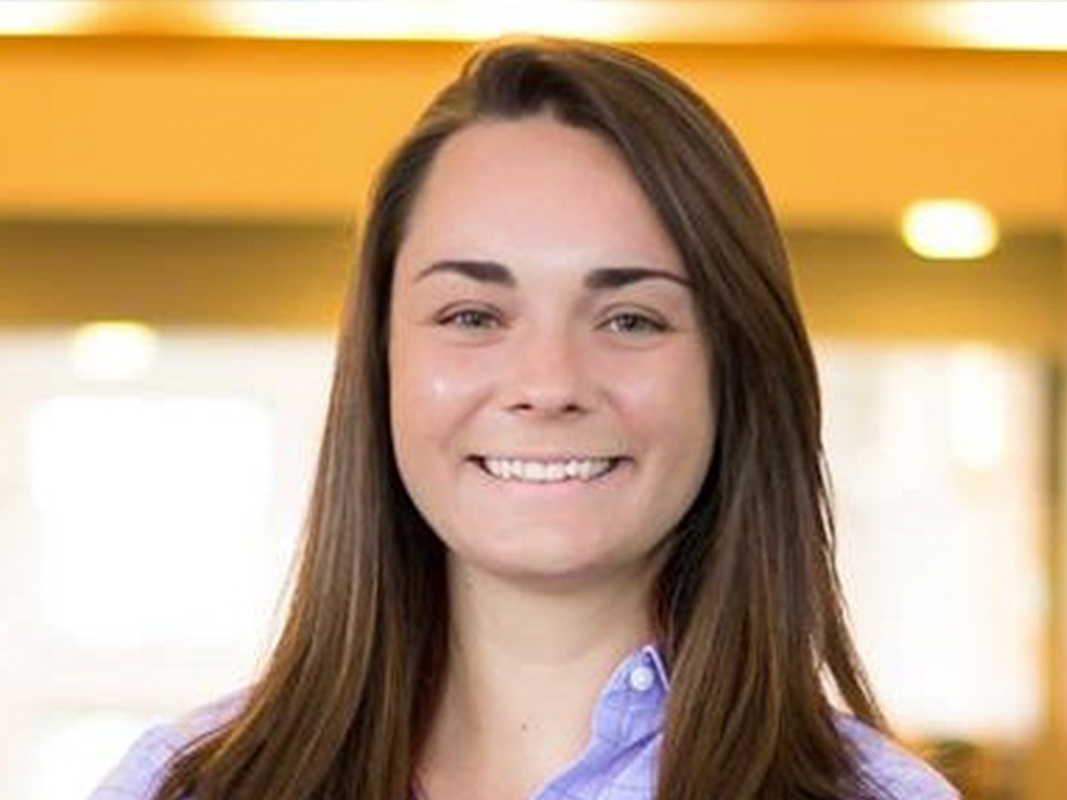
Starfish, Project Consultant
Master of Education with a Student Affairs Emphasis, 2021
Imagine the Unexpected
Ever imagine yourself working in the corporate sector? Neither did Elaine when she began pursuing her Master’s of Education in Student Affairs. Today, she works for EAB (Educational Advisory Board), a private company that uses its Starfish software program to provide over 300 educational institutions with critical retention and student success data and technology solutions.
Elaine was surprised to find herself in educational technology, but technology and student affairs are growing more intertwined. Elaine encourages other students to think creatively about their futures. A graduate degree from ELP will open unexpected doors and career paths, even in the corporate sector, and students should consider even those paths that are unexpected. In fact, EAB is a growing company and is always hiring, so Elaine encourages her future ELP alums to think about the rapidly growing field of educational technology and EAB for open positions!
Graduate Programs and Degrees Provide Opportunities and Open Doors
Elaine came to learn about Starfish during her graduate assistantship (GA), an experience she is grateful for because many of her peers at other universities didn’t have that type of opportunity available. As a GA, Elaine helped implement Starfish at Salt Lake Community College. Little did she know then that EAB would hire her as a Strategic Leader (Consultant) for other institutions before her thesis was finished! Not only did a GA positition connect Elaine with her future career, but it also showed her that she was passionate about data and technology. Now, she works with her twin passions every day.
Elaine’s GA led her to an unexpected career path, but it is really an alternate route to helping students and improving educational systems. Instead of helping individual students or a class of students, her work has a positive impact at the institutional level. The educational technology field allows Elaine to live in Utah—which she loves—and work across the country. Her projects include working with schools from one end of the country to the other, from New York to Texas to Florida. At any one time, she is working with 20 – 30 different higher ed institutions across the U.S.
Prepare to be a Leader and Work with Other Leaders
The work Elaine does every day is varied, and her responsibilities include project management, process improvement, and assisting academic institutions in retention decision-making. Staying current on research is key. Elaine has to know the trends, challenges, and potential futures of retention, assessment, and student success. She works with leaders and decision-makers like deans, researchers, administrative leaders, and PhD faculty. Her master’s and the training she received means she has the knowledge and background to have meaningful conversations with student affairs experts with many more years of experience..
At work, Elaine leads and manages projects. In her private life, Elaine sits on the Alumni Advisory Board for the Westminster Honors College . This is the alumni’s inaugural board, and Elaine is helping build the board’s future. They are doing lots of advocacy work, recruiting alumni to support college efforts, and running social activities to build the alumni community, such as an alumni book club. Although a volunteer role, Elaine is confident she wouldn’t have secured the position without her graduate degree.
Get Training that Matters
If Elaine had pursued a more traditional program, she probably wouldn’t be qualified to work in educational technology. During the pandemic, like everyone, Elaine had doubts about her path, but she couldn’t be happier she stuck with her plan. Elaine finds that the things she learned in her program and wrote about for her thesis are applied daily, as she hears Professors Sharon Aiken-Wisniewski and Paul Rubin’s lessons in her head. For instance, she has to use retention theory to explain Starfish and how it works, making her training invaluable.
Working in educational technology has allowed Elaine to see how education is structured and functions across the U.S. While there are strong similarities between schools, there are also significant differences. It’s an experience that has given her a broad view and deep understanding of higher education systems and processes. In fact, Elaine feels confident that her work experiences leave the path of more traditional educational administration roles still open; she’s waiting to see where the field, her network, and opportunities take her.
